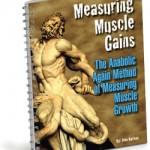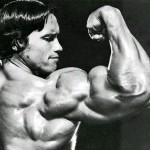Muscle building is probably one of the most misunderstood things in fitness. This lack of understanding is partly why we can fall for scam products and false claims.
As I’ve said before muscles are much more like water balloons than bricks, and the way we build them is much more like inflating a balloon than laying bricks.
Water accounts for over 80% of your muscle volume, and the amount of water you can fit/force into your muscles plays a major role in determining how big you can make them.
The actual protein ‘scaffolding’ of your muscle fibers/cells are what make up the rest.
Weight Training for Muscle Building:
1) It builds more protein so the scaffolding of your muscles cells is larger
2) It forces more water, glycogen and protein into your cells hydrating and filling them with more fluid (pumping them up)
The Slow Leak Theory of Muscle Growth
Your muscles are in a dynamic state of synthesis and degradation. If you don’t workout your muscles will eventually shrink back to their genetically predetermined original size.
In fact, if you don’t move or use your muscles at all (ie: immobilization in a cast or 100% bed rest) they will shrivel away to almost nothing.
The point is that your muscles function on a ‘use it or lose it’ basis. They will always revert back to a smaller size if you don’t force them to get bigger by lifting weights. As soon as you stop lifting weights they will start shrinking again.
Imagine that your muscles are constantly slowly leaking back to their original smaller size, and constant weight training is the only way to keep them pumped up.
How To Measure Muscle Growth
Most supplement ads and fitness sites will talk about gaining ‘pounds’ of muscle. This however is not an accurate way of measuring true changes in muscle mass. You and I could gain 5-8lbs of lean mass in one day simply from eating more food and drinking water. Our lean body mass would increase, our percentage of fat mass would decrease, but our muscle mass would not have changed.
True changes in muscle mass are harder to detect in experienced lifters and therefore there must be a more precise way to measure these changes. I have come up with a new way to measure changes in muscle mass that account for bodyweight and fat mass. This new measurement is called The Muscle Index.
Toxic Calorie Level
We’ll also talk about the Toxic Calorie level and how eating at this level is what causes fat gain, heart disease, diabetes, and other inflammatory disorders. Eating ‘big’ every once in a while isn’t so bad, but eating at your toxic calorie level on a regular basis will overwhelm your body and cause major problems.
In todays audio lesson we’ll talk about the Muscle Index and how to accurately measure changes in muscle mass.
We will also talk about the slow leak theory of muscle and why you must continue to lift weights in order to keep your muscles growing and even to maintain the size you’ve already built.
John
Podcast: Play in new window | Download

